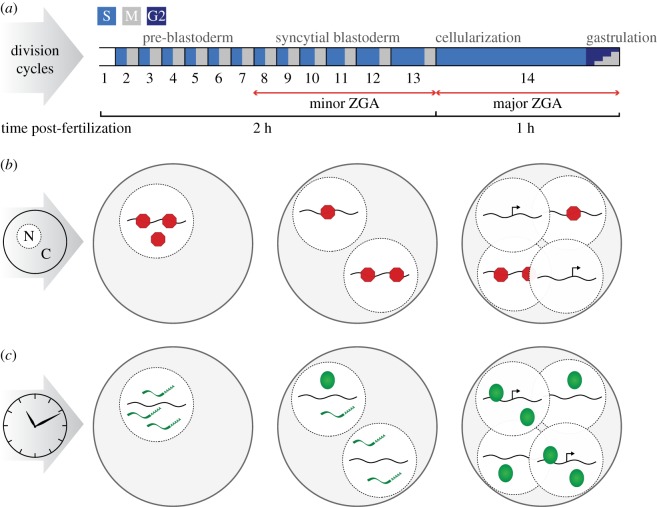Figure 2.
Multiple mechanisms trigger the onset of division-cycle remodelling and zygotic transcription. (a) The early embryo exists as a syncytium of nuclei undergoing rapid division cycles of repeated DNA replication (S) and mitosis (M). Progressive elongation of S-phase permits time to achieve transcriptional competence from the zygotic genome. The major wave of genome activation occurs at the onset of cycle 14, accompanied by cellularization of nuclei and the introduction of a gap phase (G2). (b) A proposed maternally supplied repressor (red) inhibits transcription in the early embryo. As the number of nuclei increases exponentially with each division, the nuclear : cytoplasmic ratio increases, titrating away the repressor and allowing zygotic transcription to initiate. (c) Maternal clock model in which translation of a maternal activator (green) requires a set amount of developmental time following fertilization to accumulate sufficient levels of protein to trigger ZGA.

